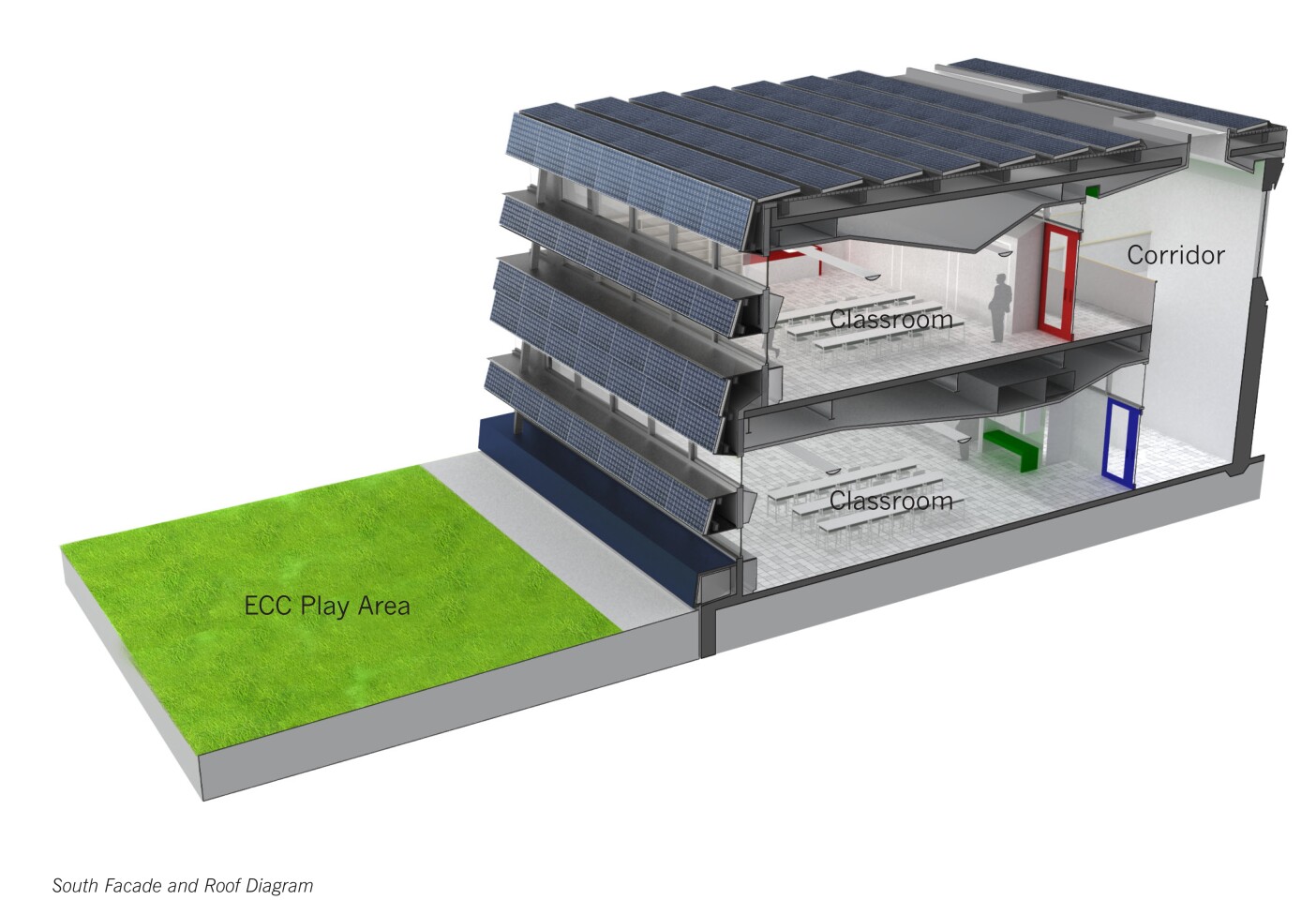Net zero: put together, they're two of the buzzwords of contemporary building design. Sometimes the phrasing's a little different. ZNE, or zero net energy, is one variation; zero-energy building is another. They're all the same thing, though: buildings designed to offset their energy consumption over the course of a year, every year. Work has commenced on one such project, a 444-student primary school on Staten Island, New York, designed by architects at SOM and engineers at AKF.
One imagines that, to be certain that a building will offset its energy use, its designers must aim for the black: to generate more energy than is actually required to offset that which is used turning lights on, powering computers and keeping classrooms warm etc. etc. That being the case, what's the difference between a net zero building and an "energy plus" (or net zero-plus) building?
Semantics aside, truly net zero and energy plus buildings are rare, and so it's fitting that the Staten Island school has been described by the New York City School Construction Authority (SCA) as a "sustainability lab," a test case for real-world trials of on-site renewable generation and low-energy technology and design.
"It is understood that not all of the lessons learned from this exercise will be applicable on a broad scale," said Bruce Barrett, the SCA's VP of Architecture & Engineering. "However this exploration into ultimate sustainability and the subsequent evaluation of our exercise will provide benefits to our School Design Program that would otherwise not be realized."
"Ultimate sustainability?" No pressure, then.
SOM says that the 66,000 ft2 (6,000 m2) building massing and orientation has been optimized for light, both for the purposes of illuminating the interior, and for getting the most out of the photovoltaics that will cover much of the building.

What's massing? It's the building's fundamental shape. The main school building is built around a courtyard, which greatly increases the surface area which can be glazed, letting more daylight inside, and so reducing the need for electric lighting. It also gives the building a bonus south facade, providing another surface for cost-viable photovoltaic panels. Limiting the school buildings to two stories means that the courtyard, which can be thought of as an enormous multi-use light well, let's useful light in at ground level.
Photovoltaics will cover the whole of the south-facing facades (except for the windows, naturally) as well as the entire roof of the school's buildings. The roof of the main block is pitches in places so that some of the panels will be nearer to perpendicular to rays of direct sunlight, allowing the PV cells to operate closer to their maximum efficiency. But the pitches are carefully arranged to minimize shadows over other solar panels or the courtyard.
As with all green architecture, energy generation is only part of the story. The energy consumption of the building has to be kept to a minimum. SOM has made the claim that its design offers a 50-percent energy reduction over a standard SCA public school (though it's not clear what the standard is.)
How? SOM says it's designed a ultra-tight high-performance building envelope, which means that, by minimizing air leakage, the heating and cooling systems will run more efficiently. The selection of low-energy lighting and efficient kitchen appliances are welcome, though one hopes we'll soon see the day when such things go without saying. A ground, or geo-exchange, heat pump will help to reduce the carbon footprint of heating and cooling further. Ventilation will be optimized with both energy-recovery and demand-control technology. Roof lights will bring more daylight into the interior, and especially the corridors
The school is due for completion in 2015. Hopefully, when the school is in use, the SCA will report on the building's actual energy consumption so we can see whether its net zero aspirations have been achieved.
Source: SOM












